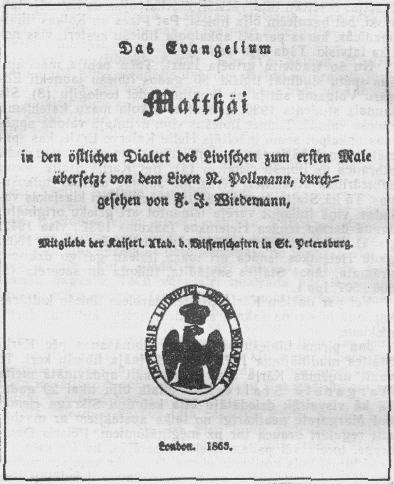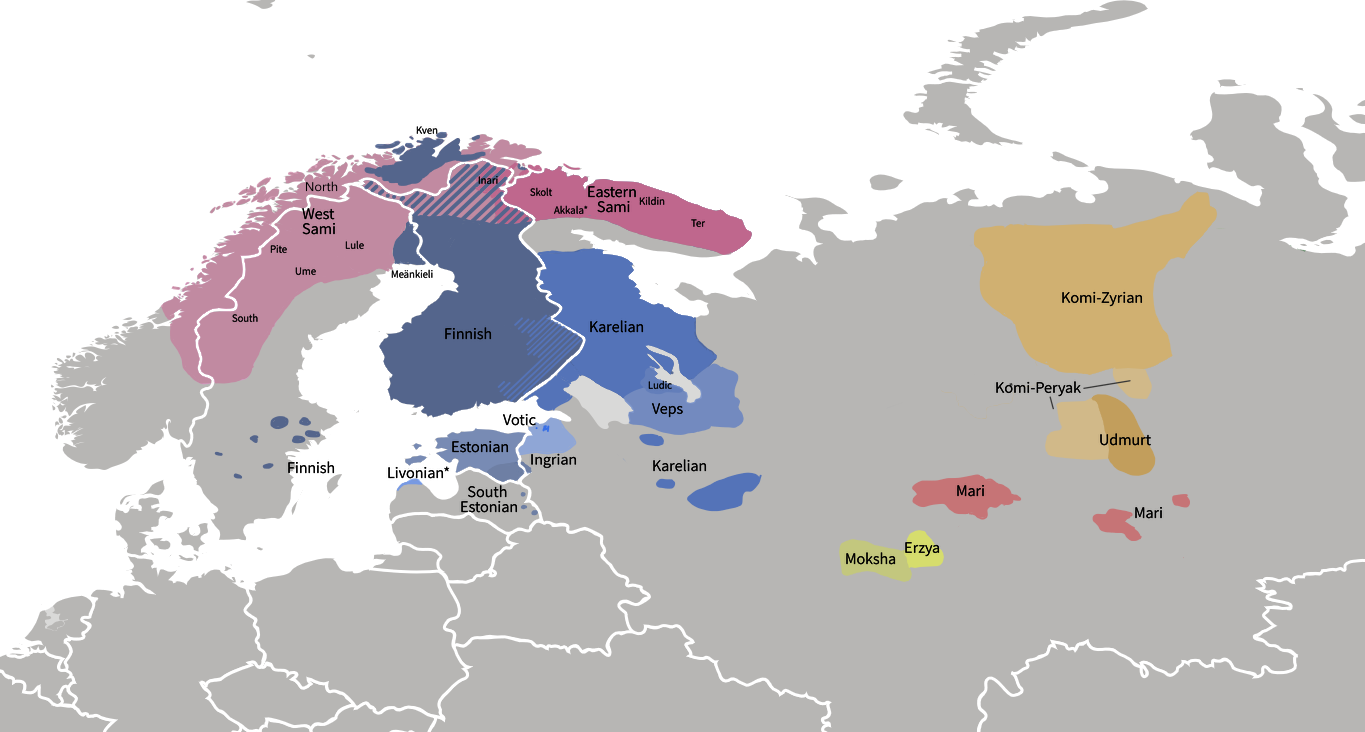|
Estonians
Estonians or Estonian people ( et, eestlased) are a Finnic ethnic group native to Estonia who speak the Estonian language. The Estonian language is spoken as the first language by the vast majority of Estonians; it is closely related to other Finnic languages, e.g. Finnish, Karelian and Livonian. The Finnic languages are a subgroup of the larger Uralic family of languages, which also includes, e.g., the Sami languages. These languages are markedly different from most other native languages spoken in Europe, most of which have been assigned to Indo-European family of languages. Estonians can also be classified into subgroups according to dialects (e.g., Võros, Setos), although such divisions have become less pronounced due to internal migration and rapid urbanisation in Estonia in the 20th century. There are approximately 1.1 million ethnic Estonians and their descendants with some degree of Estonian identity worldwide; the large majority of them are living in Estonia. H ... [...More Info...] [...Related Items...] OR: [Wikipedia] [Google] [Baidu] |
Estonia
Estonia, formally the Republic of Estonia, is a country by the Baltic Sea in Northern Europe. It is bordered to the north by the Gulf of Finland across from Finland, to the west by the sea across from Sweden, to the south by Latvia, and to the east by Lake Peipus and Russia. The territory of Estonia consists of the mainland, the larger islands of Saaremaa and Hiiumaa, and over 2,200 other islands and islets on the eastern coast of the Baltic Sea, covering a total area of . The capital city Tallinn and Tartu are the two largest urban areas of the country. The Estonian language is the autochthonous and the official language of Estonia; it is the first language of the majority of its population, as well as the world's second most spoken Finnic language. The land of what is now modern Estonia has been inhabited by '' Homo sapiens'' since at least 9,000 BC. The medieval indigenous population of Estonia was one of the last " pagan" civilisations in Europe to adopt Ch ... [...More Info...] [...Related Items...] OR: [Wikipedia] [Google] [Baidu] |
Religion In Estonia
Estonia, historically a Lutheran Christian nation, is today one of the "least religious" countries in the world in terms of declared attitudes, with only 14 percent of the population declaring religion to be an important part of their daily life. The religious population is predominantly Christian and includes followers of 90 affiliations. According to the Estonian Council of Churches data from December 2019, 13.8 percent of the population belong to the Estonian Evangelical Lutheran Church, while 13.1 percent belong to the Estonian Orthodox Church of Moscow Patriarchate (EOCMP), and 2.3 percent belong to the Estonian Apostolic Orthodox Church. The Union of Free Evangelical and Baptist Churches of Estonia and the Roman Catholic Church in Estonia together comprise 1 percent of the population. Other Christian groups, including Jehovah’s Witnesses, Pentecostals, Methodists, Seventh-day Adventists, and Russian Old Believers, collectively constitute 1.1 percent of the population. Ac ... [...More Info...] [...Related Items...] OR: [Wikipedia] [Google] [Baidu] |
Baltic Finns
The Baltic Finnic or Balto-Finnic peoples, also referred to as the Baltic Sea Finns, Baltic Finns, sometimes Western Finnic and often simply as the Finnic peoples, are the peoples inhabiting the Baltic Sea region in Northern and Eastern Europe who speak Finnic languages. They include the Finns, Estonians (including Võros and Setos), Karelians (including Ludes and Livvi), Veps, Izhorians, Votes, and Livonians. In some cases the Kvens, Ingrians, Tornedalians and speakers of Meänkieli are considered separate from the Finns. The bulk of the Finnic peoples (more than 98%) are ethnic Finns and Estonians, who reside in the only two independent Finnic nation states—Finland and Estonia. Finnic peoples are also significant minority groups in neighbouring countries of Sweden, Norway and especially Russia. Theories of origin According to the "Migration Theory" that was based primarily on comparative linguistics, the proto-Finns migrated from an ancient homeland somewhere in nort ... [...More Info...] [...Related Items...] OR: [Wikipedia] [Google] [Baidu] |
Estonian Language
Estonian ( ) is a Finnic language, written in the Latin script. It is the official language of Estonia and one of the official languages of the European Union, spoken natively by about 1.1 million people; 922,000 people in Estonia and 160,000 outside Estonia. Classification Estonian belongs to the Finnic branch of the Uralic language family. The Finnic languages also include Finnish and a few minority languages spoken around the Baltic Sea and in northwestern Russia. Estonian is subclassified as a Southern Finnic language and it is the second-most-spoken language among all the Finnic languages. Alongside Finnish, Hungarian and Maltese, Estonian is one of the four official languages of the European Union that are not of an Indo-European origin. From the typological point of view, Estonian is a predominantly agglutinative language. The loss of word-final sounds is extensive, and this has made its inflectional morphology markedly more fusional, especially with respect to no ... [...More Info...] [...Related Items...] OR: [Wikipedia] [Google] [Baidu] |
Livonian Language
The Livonian language ( liv, līvõ kēļ, link=no or ; et, liivi keel, link=yes) is a Finnic language whose native land is the Livonian Coast of the Gulf of Livonia, located in the north of the Kurzeme peninsula in Latvia. Although its last native speaker died in 2013, there are about 40 reported L2 speakers and 210 having reported some knowledge of the language. Possibly uniquely among the Uralic languages, Livonian has been described as a pitch-accent language (see below). Currently, the only person whose native language is Livonian is Kuldi Medne who was born in 2020. Her parents are Livonian language revival activists Jānis Mednis and Renāte Medne. Some ethnic Livonians are learning or have learned Livonian in an attempt to revive it, but because ethnic Livonians are a small minority, opportunities to use Livonian are limited. The Estonian newspaper ''Eesti Päevaleht'' erroneously announced that Viktors Bertholds, who died on 28 February 2009, was the last native sp ... [...More Info...] [...Related Items...] OR: [Wikipedia] [Google] [Baidu] |
Setos
Setos ( seto, setokõsõq, , et, setukesed, ) are an indigenous Balto-Finnic peoples, Finnic peoples and linguistic minority that have historically lived in the borderlands between modern day Estonia and Russia. Setos have historically spoken the Seto language and been Eastern Orthodox Church, Orthodox Christians.Kalkun, A., Kupari, H., & Vuola, E. (2018). ''Coping with Loss of Homeland through Orthodox Christian Processions: Contemporary Practices among Setos, Karelians, and Skolt Sámi in Estonia and Finland''. ''Practical matters'', ''11''. http://practicalmattersjournal.org/2018/06/11/coping-with-loss-of-homeland-2/ The Seto language (like Estonian language, Estonian and Finnish language, Finnish) belongs to the Finnic languages, Finnic group of the Uralic languages, Uralic language family. Since the early 2000s, the Setos have sought greater recognition, rather than having their language considered a dialect of Estonian. Eastern Orthodox Christianity, with influences from l ... [...More Info...] [...Related Items...] OR: [Wikipedia] [Google] [Baidu] |
Estonian Apostolic Orthodox Church
The Estonian Apostolic Orthodox Church ( et, Eesti Apostlik-Õigeusu Kirik; EOC) is an Orthodox church in Estonia under the direct jurisdiction of the Ecumenical Patriarch of Constantinople. Under Estonian law it is the legal successor to the pre–World War II Estonian Orthodox Church, which in 1940 had over 210,000 faithful, three bishops, 156 parishes, 131 priests, 19 deacons, two monasteries, and a theological seminary; the majority of the faithful were ethnic Estonians. Its official name is the Orthodox Church of Estonia. The current primate of the church is Stephanos, Metropolitan of Tallinn and all Estonia, elected in 1999. History Little is known about the history of the church in the area until the 17th and 18th centuries, when many Old Believers fled there from Russia to avoid the liturgical reforms introduced by Patriarch Nikon of Moscow.In the 18th and 19th centuries, Estonia was a part of the Russian Empire. In the 1850s a rumour spread that the Orthodox Church pr ... [...More Info...] [...Related Items...] OR: [Wikipedia] [Google] [Baidu] |
Finnic Peoples
The Finnic or Fennic peoples, sometimes simply called Finns, are the nations who speak languages traditionally classified in the Finnic (now commonly '' Finno-Permic'') language family, and which are thought to have originated in the region of the Volga River. The largest Finnic peoples by population are the Finns (or more precisely the Suomi, 6 million), the Estonians (1 million), the Mordvins (800,000), the Mari (570,000), the Udmurts (550,000), the Komis (330,000) and the Sami (100,000). The scope of the name "Finn" and "Finnic" varies by country. Today, Finnish and Estonian scholars restrict the term "Finnic" to the Baltic Finns, who include the Western Finns of Finland and their closest relatives but not the Sami. In Russia, however, where the Eastern Finns live, the word continues to be used in the broad sense, and sometimes implies the Volga Finns who have their own national republics. Three groups of people are covered by the names "Finn" and "Finnic" in the broad se ... [...More Info...] [...Related Items...] OR: [Wikipedia] [Google] [Baidu] |
Võro People
Võro may refer to: * Võro people, an ethnic group of Estonia * Võro language, a language belonging to the Baltic-Finnic branch of the Finno-Ugric languages of Estonia * Võro Institute, the governing organization of the Võro language Voro may refer to: * Voro language (Adamawa), spoken in Nigeria * Voro (footballer) (born 1963), Spanish footballer See also *Voru (other) Voru may refer to: Places * Võru County, Estonia ** Võru Võru (; vro, Võro; german: Werro) is a town and a municipality in south-eastern Estonia. It is the capital of Võru County and the centre of Võru Parish. History Võru was founded on ... {{disambig Language and nationality disambiguation pages ... [...More Info...] [...Related Items...] OR: [Wikipedia] [Google] [Baidu] |
Dialect
The term dialect (from Latin , , from the Ancient Greek word , 'discourse', from , 'through' and , 'I speak') can refer to either of two distinctly different types of Linguistics, linguistic phenomena: One usage refers to a variety (linguistics), variety of a language that is a characteristic of a particular group of the language's speakers. Under this definition, the dialects or varieties of a particular language are closely related and, despite their differences, are most often largely Mutual intelligibility, mutually intelligible, especially if close to one another on the dialect continuum. The term is applied most often to regional speech patterns, but a dialect may also be defined by other factors, such as social class or ethnicity. A dialect that is associated with a particular social class can be termed a sociolect, a dialect that is associated with a particular ethnic group can be termed an ethnolect, and a geographical/regional dialect may be termed a regiolectWolfram, ... [...More Info...] [...Related Items...] OR: [Wikipedia] [Google] [Baidu] |
Indo-European Languages
The Indo-European languages are a language family native to the overwhelming majority of Europe, the Iranian plateau, and the northern Indian subcontinent. Some European languages of this family, English, French, Portuguese, Russian, Dutch, and Spanish, have expanded through colonialism in the modern period and are now spoken across several continents. The Indo-European family is divided into several branches or sub-families, of which there are eight groups with languages still alive today: Albanian, Armenian, Balto-Slavic, Celtic, Germanic, Hellenic, Indo-Iranian, and Italic; and another nine subdivisions that are now extinct. Today, the individual Indo-European languages with the most native speakers are English, Hindi–Urdu, Spanish, Bengali, French, Russian, Portuguese, German, and Punjabi, each with over 100 million native speakers; many others are small and in danger of extinction. In total, 46% of the world's population (3.2 billion people) speaks an ... [...More Info...] [...Related Items...] OR: [Wikipedia] [Google] [Baidu] |
Languages Of Europe
Most languages of Europe belong to the Indo-European language family. Out of a total European population of 744 million as of 2018, some 94% are native speakers of an Indo-European language. Within Indo-European, the three largest phyla are Romance, Germanic, and Slavic, they have more than 200 million speakers each and together account for close to 90% of Europeans. Smaller phyla of Indo-European found in Europe include Hellenic (Greek, 13 million), Baltic ( 7 million), Albanian ( 5 million), Celtic ( 4 million), Armenian ( 4 million) and Indo-Aryan (Romani, 1.5 million). Of the approximately 45 million Europeans speaking non-Indo-European languages, most speak languages within either the Uralic or Turkic families. Still smaller groups — such as Basque (language isolate), Semitic languages ( Maltese, 0.5 million), and various languages of the Caucasus — account for less than 1% of the European population between them. Immigration has added sizeable communities of s ... [...More Info...] [...Related Items...] OR: [Wikipedia] [Google] [Baidu] |








